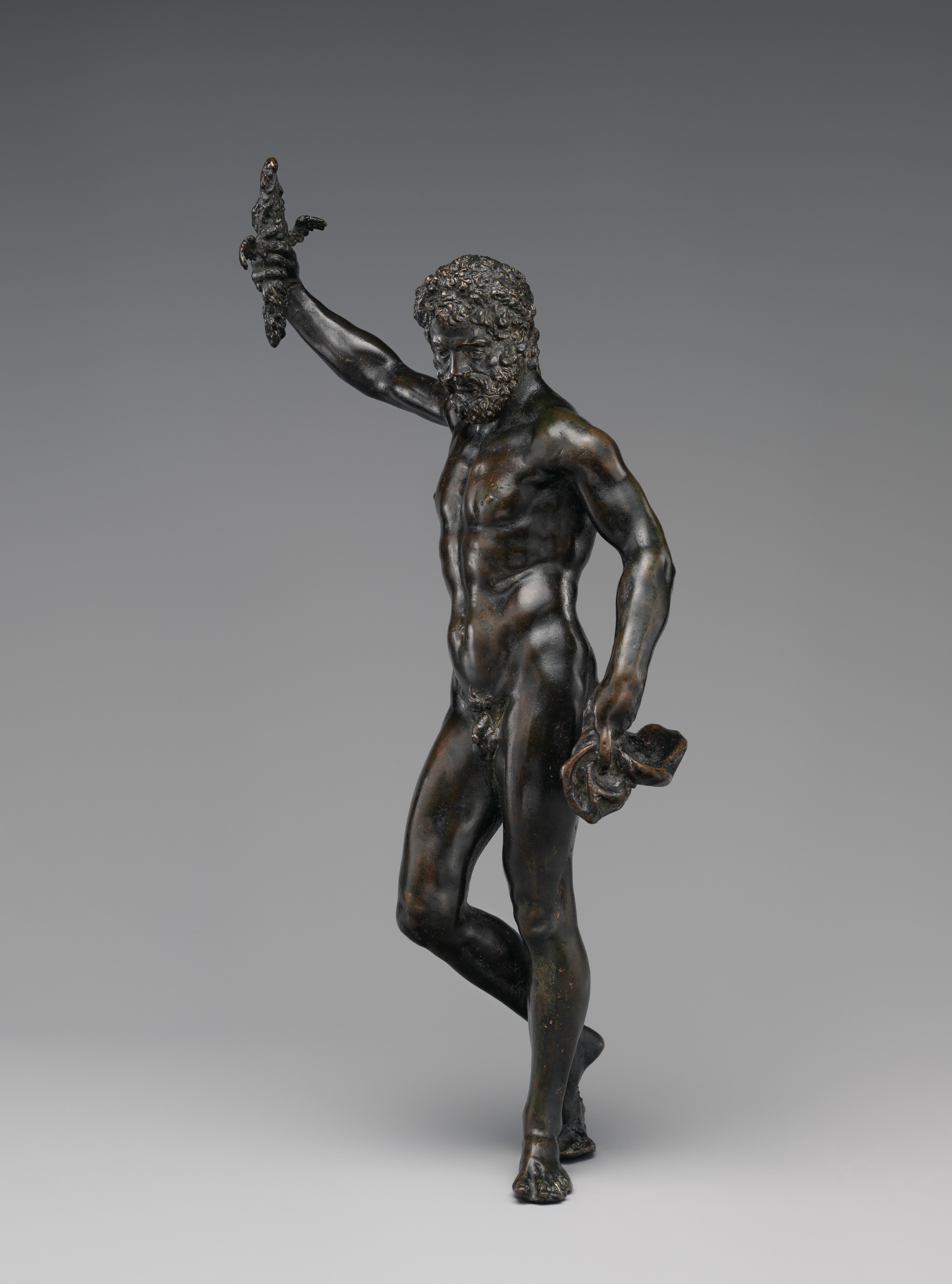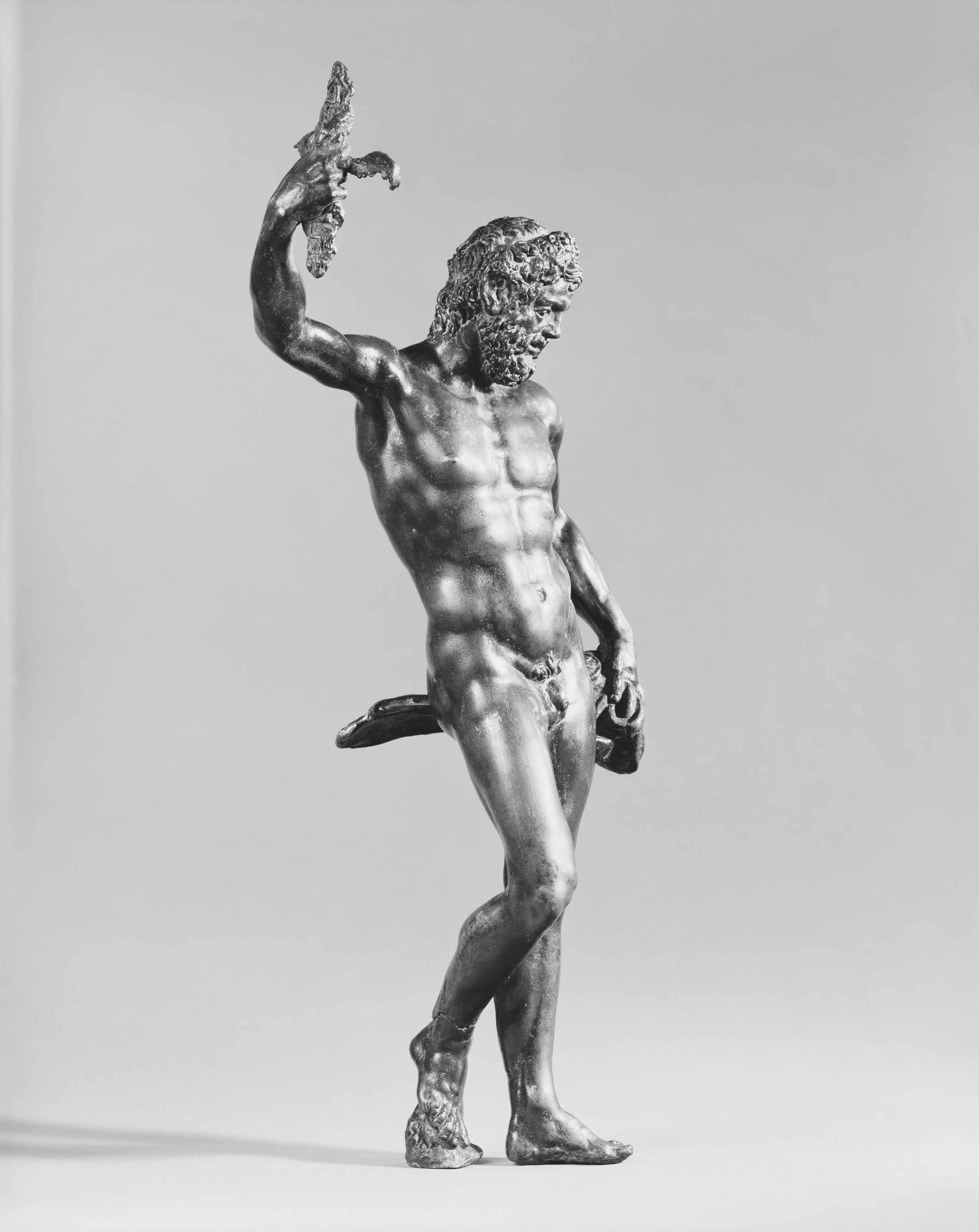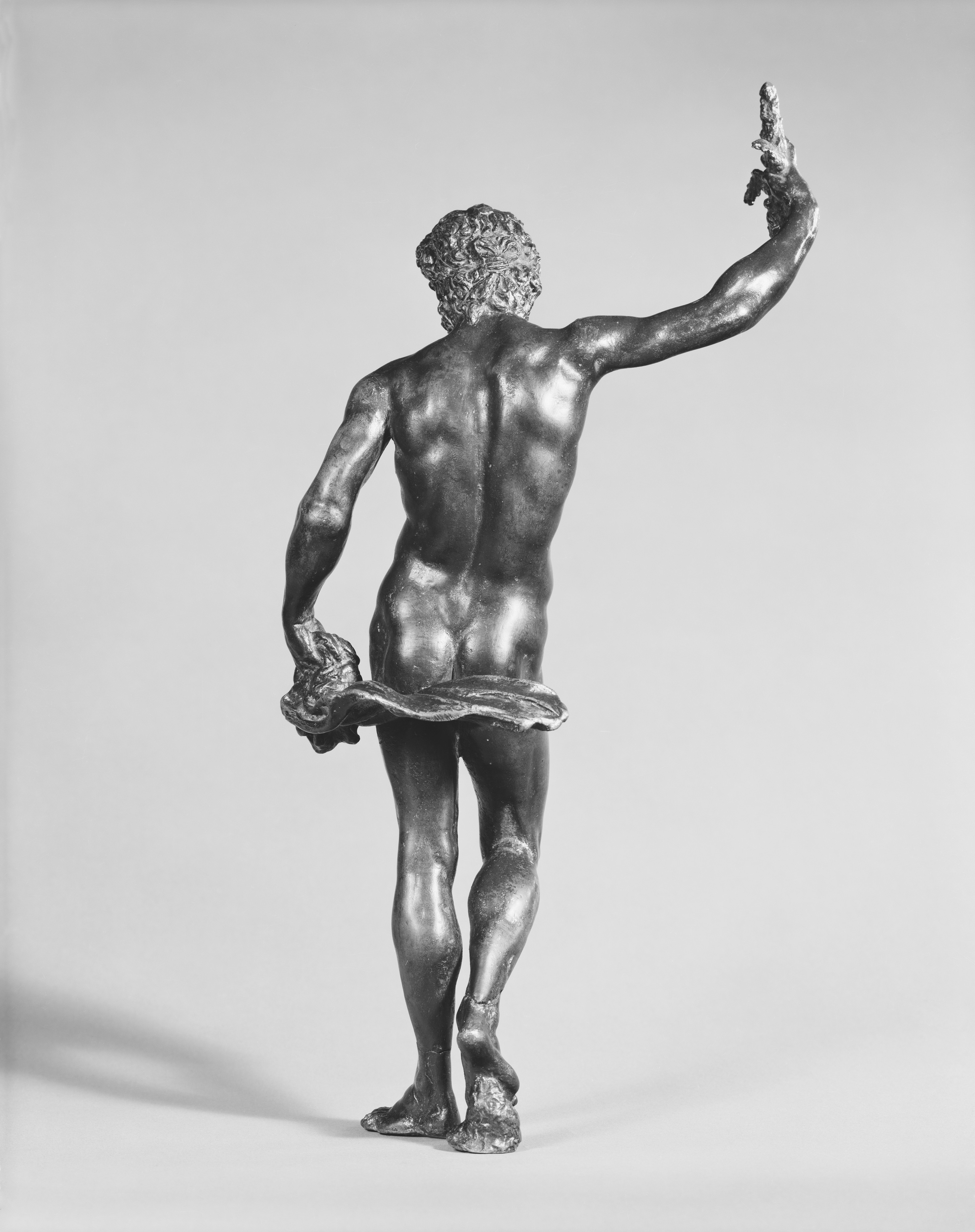Jupiter
After a model by Benvenuto Cellini Italian
Probably cast by Pietro da Barga Italian
Benvenuto Cellini worked at the court of François I on a projected set of twelve silver statues of divinities to serve as candelabra. The Jupiter alone seems to have reached completion, and when he returned to Florence in 1544, he must have brought a wax or clay model with him. Cellini said the god’s right hand held a torch while in his left was “the globe of the world.”[1] At least four reductions similar to the present one survive, and none retains a globe. Ours, with the oldest provenance but only back to around 1863, holds instead an odd horizontal stretch of fabric, and that in the Detroit Institute of Arts a cloth bunched like a damp towel.[2] The others, all with variations, are in the Museum für Kunst und Gewerbe, Hamburg, the Museo Arqueológico, Madrid, and the former collection of Perry Rathbone, Boston and New York; another was stolen from a New York collection in 1975. It is generally agreed that ours is the best of them.
A previous ascription to Pietro da Barga, advanced by the current writer in 1977, rested on stylistic analogies to his documented bronzes. The beefy facial features, flaccid modeling including an indented arc to describe the spine, and a curious fleur-de-lis shape for pubic hair occur in Pietro’s Farnese Hercules (cat. 102). The facture, however, is different,[3] leading us to abandon that attribution.
-JDD
Footnotes
(For key to shortened references see bibliography in Allen, Italian Renaissance and Baroque Bronzes in The Metropolitan Museum of Art. NY: The Metropolitan Museum of Art, 2022.)
1. Cellini 1910, p. 324.
2. DIA, 38.102; see Darr et al. 2002, cat. 107.
3. Radiographs show very thin, even walls with wax-to-wax joins in the shoulders and core pin holes plugged with driven wires; the absence of obvious bubble or drip marks suggests a clay core. In contrast, Pietro’s Farnese Hercules was cast with transfixing core pins, a plaster core, and threaded plugs. R. Stone/TR, November 14, 2010.
Due to rights restrictions, this image cannot be enlarged, viewed at full screen, or downloaded.
This artwork is meant to be viewed from right to left. Scroll left to view more.





